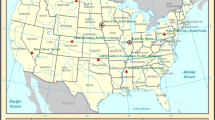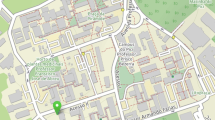Abstract
Sunshine duration data are desirable for calculating daily solar radiation (R s) and subsequent reference evapotranspiration (ET0) using the Penman–Monteith (PM) method. In the absence of measured R s data, the Ångström equation has been recommended by the Food and Agriculture Organization (FAO) of the United Nations. This equation requires actual sunshine duration that is not commonly observed at many weather stations. This paper examines the potential for the use of artificial neural networks (ANNs) to estimate sunshine duration based on air temperature and humidity data under arid environment. This is important because these data are commonly available parameters. The impact of the estimated sunshine duration on estimation of R s and ET0 was also conducted. The four weather stations selected for this study are located in Sistan and Baluchestan Province (southeast of Iran). The study demonstrated that modelling of sunshine duration through the use of ANN technique made acceptable estimates. Models were compared using the determination coefficient (R 2), the root mean square error (RMSE) and the mean bias error (MBE). Average R 2, RMSE and MBE for the comparison between measured and estimated sunshine duration were calculated resulting 0.81, 6.3 % and 0.1 %, respectively. Our analyses also demonstrate that the difference between the measured and estimated sunshine duration has less effect on the estimated R s and ET0 by using Ångström and FAO-PM equations, respectively.






Similar content being viewed by others
References
Abraha MG, Savage MJ (2008) Comparison of estimates of daily solar radiation from air temperature range for application in crop simulations. Agric For Meteorol 148(3):401–416
Allen RG, Pereira LS, Raes D, Smith M (1998) Crop evapotranspiration: guidelines for computing crop requirements, FAO Irrigation and Drainage Paper No. 56. FAO, Rome
Ångström A (1924) Solar and terrestrial radiation. Q J R Meteorol Soc 50(2):121–126
Bertrand C, Demain C, Journee M (2013) Estimating daily sunshine duration over Belgium by combination of station and satellite data. Remote Sens Lett 4(8):735–744
Atkinson PM, Tatnall ARL (1997) Introduction neural networks in remote sensing. Int J Remote Sens 18:699–709
Coulibaly P, Anctil F, Bobee B (2000) Daily reservoir inflow forecasting using artificial neural networks with stopped training approach. J Hydrol 230(3–4):244–257
Droogers P, Allen RG (2002) Estimating reference evapotranspiration under inaccurate data conditions. Irrig Drain Syst 16:33–45
Hagan MT, Menhaj MB (1994) Training feedforward networks with the Marquardt algorithm. IEEE Trans Neural Netw 5:989–993
Hornik K, Stinchcombe M, White H (1989) Multilayer feedforward networks are universal approximators. Neural Netw 2:359–366
Hussain M (1984) Estimation of global and diffuse solar radiation from sunshine duration and atmospheric water vapor content. Sol Energy 33(2):217–220
Jensen ME (1985) Personal communication. ASAE national conference, Chicago, IL
Liu DL, Scott BJ (2001) Estimation of solar radiation in Australia from rainfall and temperature observations. Agric For Meteorol 106:41–59
Mohandes MA, Rehman S (2013) Estimation of sunshine duration in Saudi Arabia. J Renew Sustain Energ 5(3):13
Prechelt L (1998) Automatic early stopping using cross validation: quantifying the criteria. Neural Netw 11:761–767
Rehman S (1998) Solar radiation over Saudi Arabia and comparison with empirical models. Energy 23(12):1077–1082
Samuel TDMA (1991) Estimation of global solar radiation for Sri Lanka. Sol Energy 47(5):333–337
Sahin AD (2007) A new formulation for solar irradiation and sunshine duration estimation. Int J Energy Res 31:109–118
Sarle WS (1995) Stopped training and other remedies for overfitting. In: Proceedings of the 27th symposium on the interface of computing science statistics
Shamim MA, Remesan R, Han D (2009) Global sunshine duration estimation on a daily basis using Geostationary Satellite Imagery. Geophysical Research Abstracts 11–4325
Sudheer KP, Gosain AK, Ramasastri KS (2003) Estimating actual evapotranspiration from limited climatic data using neural computing technique. Irrig Drain Eng 129(3):214–218
Weiss A, Hays CJ (2004) Simulation of daily solar irradiance. Agric For Meteorol 123:187–199
Acknowledgements
This study is the partial work under Project No. WR1-1389-631 supported by Sistan and Baluchestan Regional Water Corporation and was done in the Department of Irrigation and Drainage Engineering, Aburaihan Campus, University of Tehran.
Author information
Authors and Affiliations
Corresponding author
Rights and permissions
About this article
Cite this article
Rahimikhoob, A. Estimating sunshine duration from other climatic data by artificial neural network for ET0 estimation in an arid environment. Theor Appl Climatol 118, 1–8 (2014). https://doi.org/10.1007/s00704-013-1047-1
Received:
Accepted:
Published:
Issue Date:
DOI: https://doi.org/10.1007/s00704-013-1047-1




